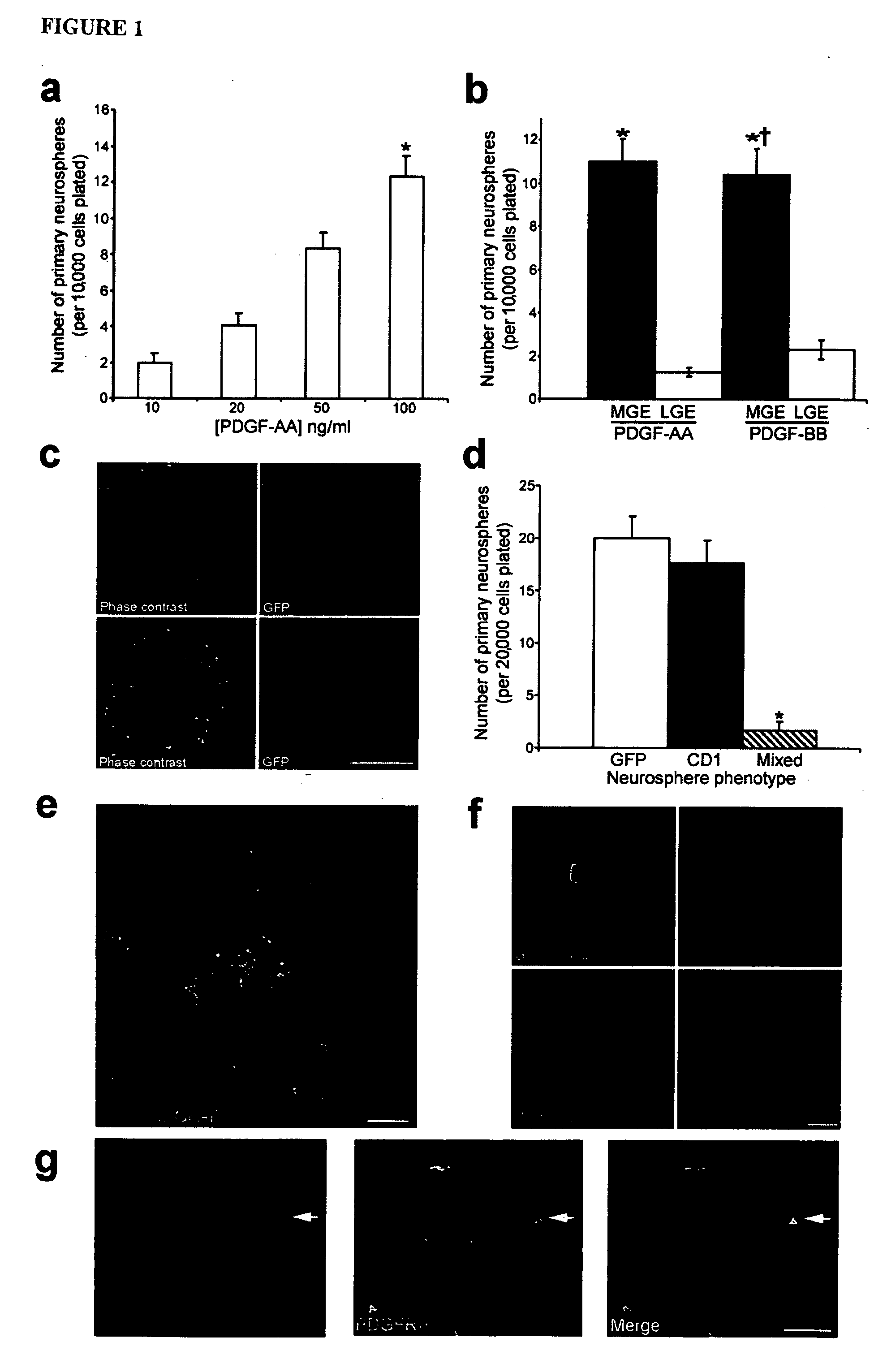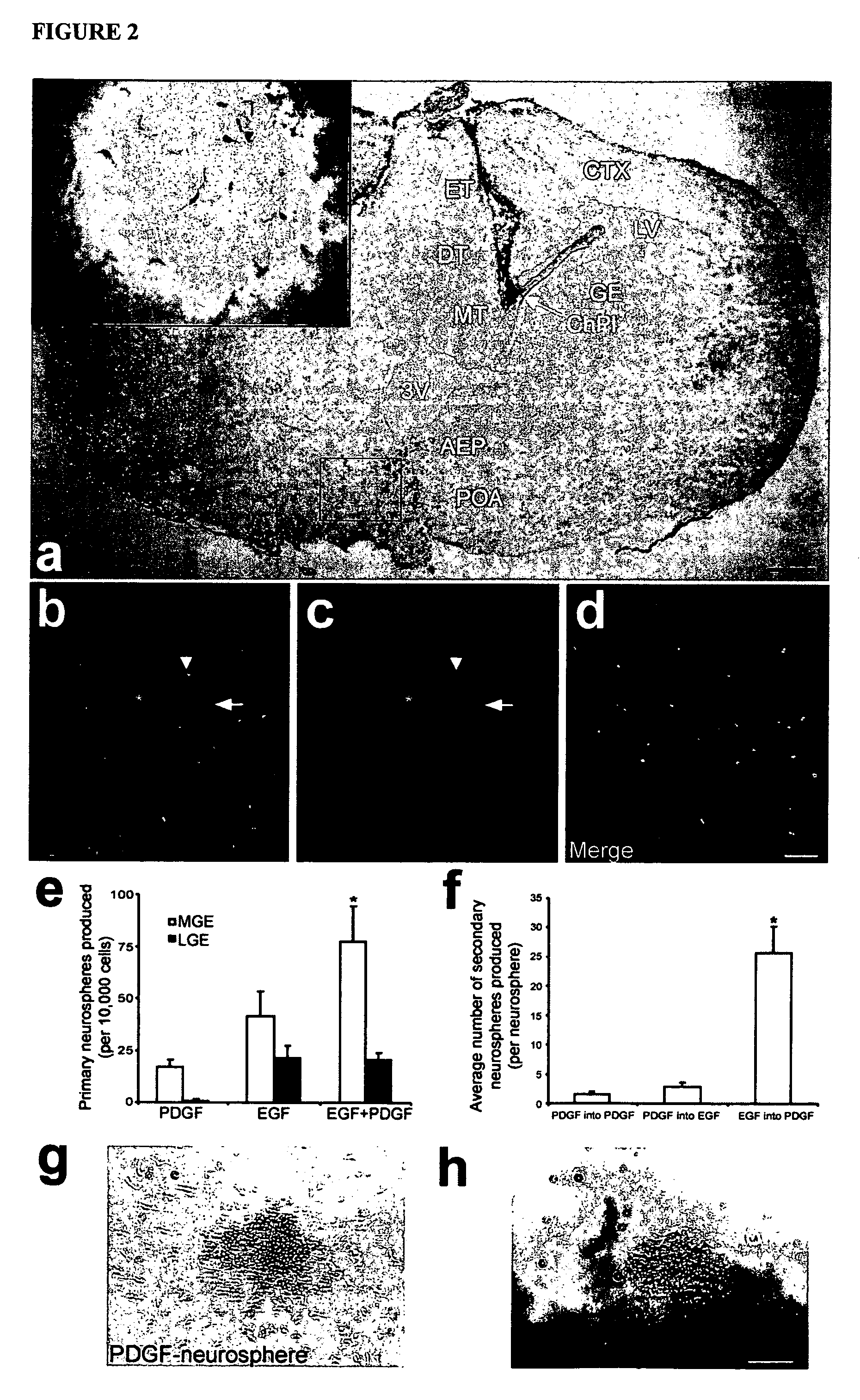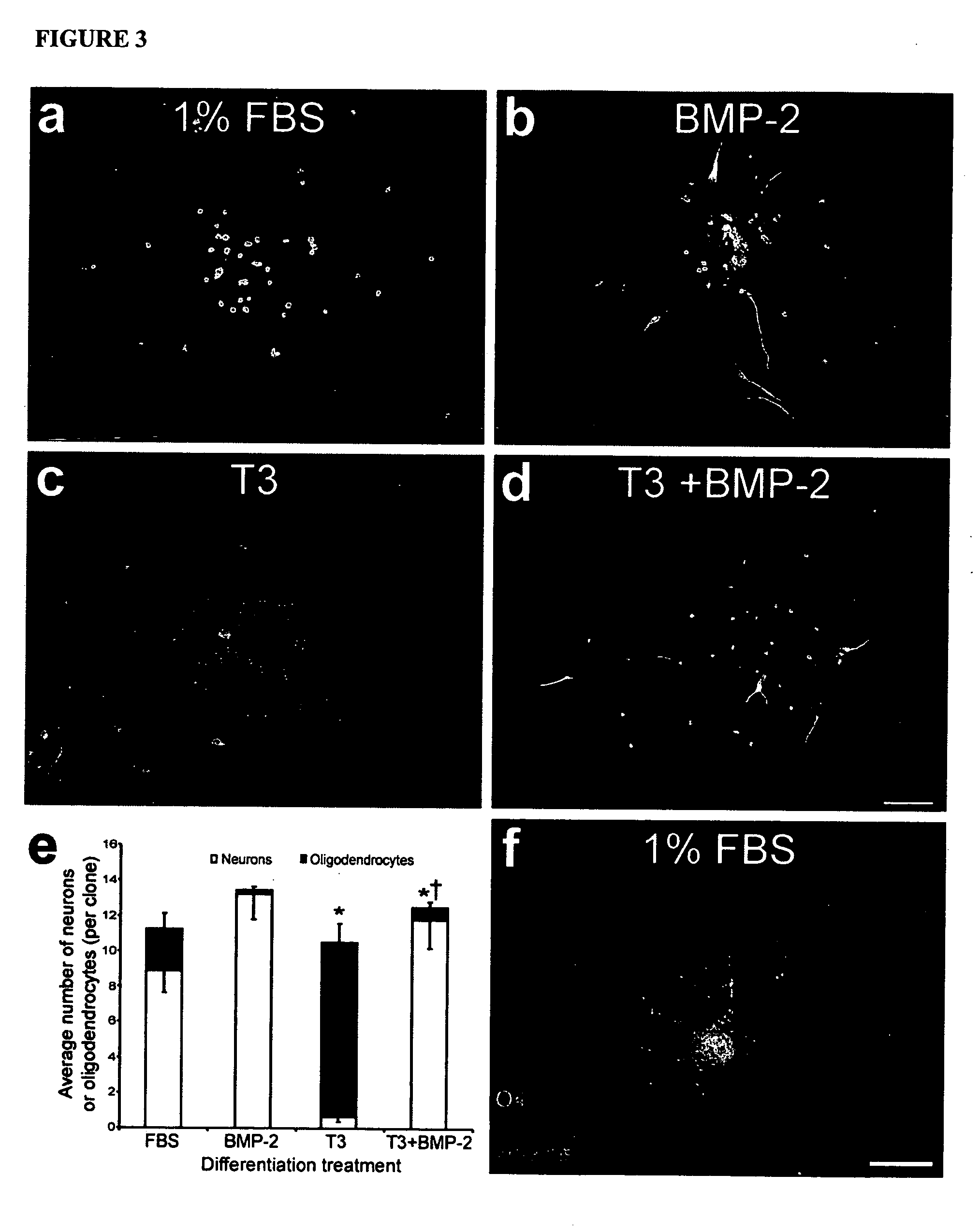Platelet-derived growth factor-responsive neural precursor cells and progeny thereof
a neural precursor and platelet-derived growth factor technology, applied in the direction of plant growth regulators, biocide, neural system cells, etc., can solve the problems of difficult to determine whether neurons are generated by embryonic olps or non-related olig-expressing progenitors, and whether they represent the differentiation properties of an olp population
- Summary
- Abstract
- Description
- Claims
- Application Information
AI Technical Summary
Problems solved by technology
Method used
Image
Examples
example 1
[0171] This example provides a description of materials and methods.
[0172] Animals. TgN(GFPU)5Nagy (GFP) mice were obtained from Jackson Laboratory (Bar Harbor, Me.) and along with CD-1 mice stocks were maintained in the University of Calgary Bioscience Animal Resources Center.
[0173] Cell culture. The culture medium (MHM) was composed of DMEM / F-12 (1:1) including HEPES buffer (5 mM), glucose (0.6%), sodium bicarbonate (3 mM), glutamine (2 mM), insulin (25 μg / ml), transferrin (100 μg / ml), progesterone (20 nM), putrescine (10 μM), and sodium selenite (30 nM; all from Sigma, St. Louis, Mo., except glutamine from Invitrogen, Carlsbad, Calif.). The lateral, medial, or both ganglionic eminences (LGE, MGE or both) were removed from Embryonic Day 14 (E14) mouse embryos and mechanically dissociated with a fire-polished Pasteur pipette in MHM. Cells were plated at a density of 0.0×106 cells / ml unless otherwise indicated.
[0174] For neurosphere generation, PDGF-AA (100 ng / ml; Peprotech, Rock...
example 2
[0182] This example includes data indicating that E14 medial ganglionic eminence (MGE) is the source of neurosphere generating PRPs. This example also includes data indicating that PRPs have potential to differentiate into neurons and oligodendrocytes
[0183] PDGFR-AA is one of the earliest markers of OLPs, and signaling by PDGF-AA is required for the generation of most oligodendrocytes (Fruttiger et al., Development 126:457 (1999)). Increasing concentrations of PDGF-AA were used to determine whether stimulation of dissociated E14 medial and lateral ganglionic eminences. (MGE and LGE, respectively) results in generation of neurospheres. The neurosphere assay was used because manipulation of primary cells is minimal compared to the immunopanning procedures used to isolate O-2A progenitors.
[0184] PDGF-AA induced neurosphere production in a dose-dependent manner. Significantly more neurospheres were produced in 100 ng / ml of PDGF-AA compared to all other concentrations tested (p<0.01; 1...
example 3
[0190] This example includes data indicating that PRPs are distinct from EGF-responsive NSCs.
[0191] The finding that PRPs reside mainly in the MGE, and that they do not produce astrocytes, indicate that PRPs are distinct from EGF-responsive NSCs. Indeed, EGF can generate neurospheres from both MGE and LGE, and these neurospheres produce neurons, oligodendrocytes, and astrocytes when differentiated in 1% FBS (Reynolds et al., Dev Biol 175:1 (1996)). If PDGF and EGF stimulate distinct populations to produce neurospheres, one would predict a predominantly non-overlapping pattern of PDGF and EGF receptor expression within the MGE or anterior entopeduncular (AEP). Thus, the expression of PDGFRα and EGFR was studied in transverse sections of the E14 forebrain.
[0192] PDGFRα expression was largely restricted to the AEP, preoptic area, the primordia of the choroid plexus, and the meninges (FIG. 2A). Double-labelling for PDGFRα (arrowhead) and EGFR (arrow) revealed two populations of cells ...
PUM
 Login to View More
Login to View More Abstract
Description
Claims
Application Information
 Login to View More
Login to View More - R&D
- Intellectual Property
- Life Sciences
- Materials
- Tech Scout
- Unparalleled Data Quality
- Higher Quality Content
- 60% Fewer Hallucinations
Browse by: Latest US Patents, China's latest patents, Technical Efficacy Thesaurus, Application Domain, Technology Topic, Popular Technical Reports.
© 2025 PatSnap. All rights reserved.Legal|Privacy policy|Modern Slavery Act Transparency Statement|Sitemap|About US| Contact US: help@patsnap.com



